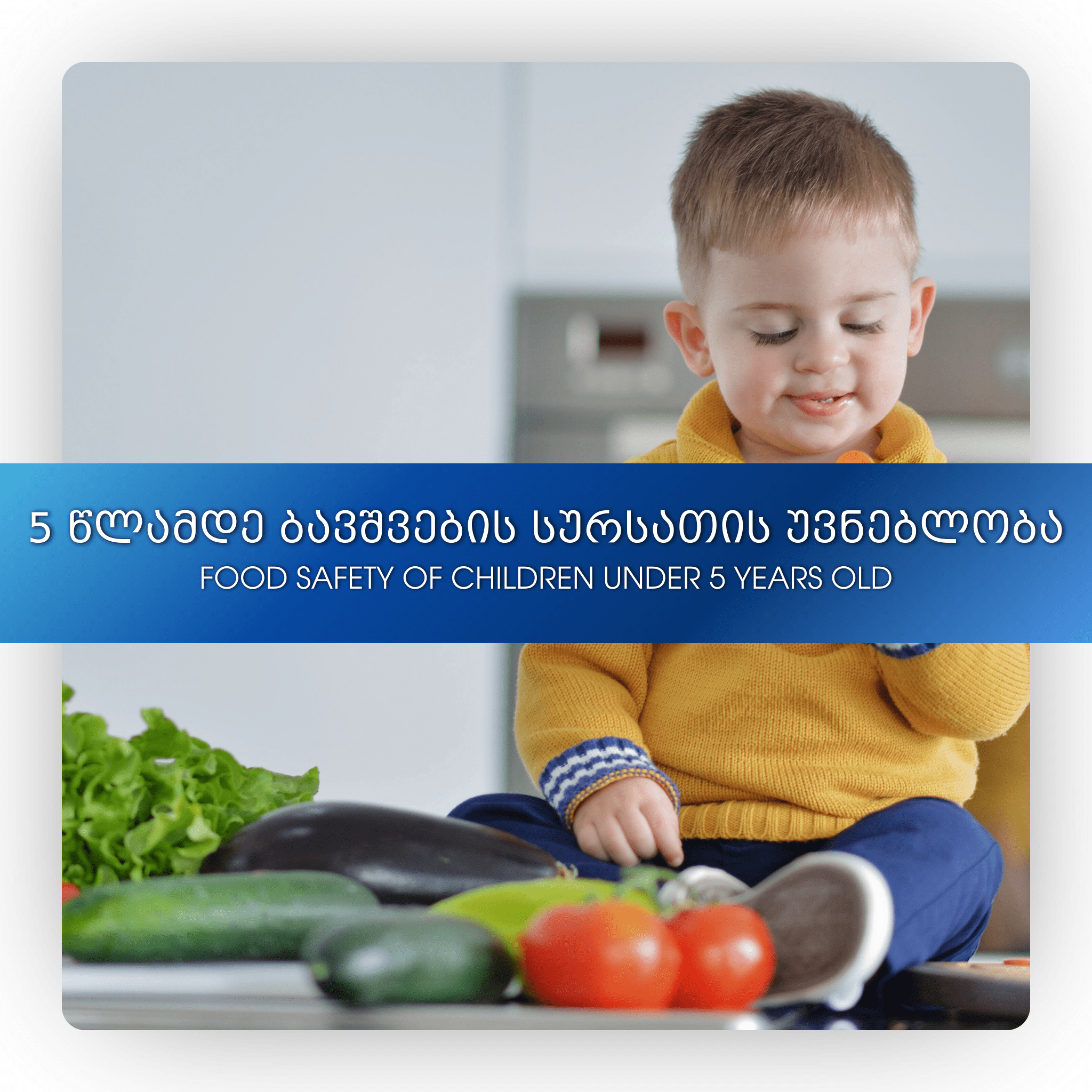Food safety of children under 5 years old
Children younger than five years are at an increased risk for foodborne illness and related health complications because their immune systems are still developing. Young children with developing immune systems cannot fight off infections as well as adults. In addition, young children produce less stomach acid that kills harmful bacteria, making it easier for them to get sick.
Foodborne illness (also called food poisoning) can be particularly dangerous for young children because it often causes vomiting or diarrhea or both. Since children's bodies are small, they can quickly lose a lot of body fluid and become dehydrated.
Food safety for young children depends on the food safety behaviors of their parents and caregivers. Handwashing is especially important. Children and those caring for them should wash hands often, especially before, during and after preparing food and before eating.
In children under 5 years old, E. coli infections are more likely to lead to hemolytic uremic syndrome (HUS), a severe complication that can cause chronic kidney disease, kidney failure and death.
Symptoms of HUS are:
◾️ Urinating less often
◾️ Feeling very tired
◾️ Losing pink color in cheeks and inside the lower eyelids
Choose and Prepare Safe Food
If you prepare food for children under the age of five, you should always follow these four steps:
Clean
◾️ Wash your hands and work surfaces before, during, and after preparing food. Germs can survive in many places around your kitchen, including your hands, utensils, cutting boards, and countertops.
Separate
◾️ Separate raw meat, poultry, seafood, and eggs from ready-to-eat foods. Use separate cutting boards and keep raw meat away from other foods in your shopping cart and refrigerator.
Cook
◾️ Cook food to the right internal temperature to kill harmful bacteria. Use a food thermometer.
Chill
◾️ Keep your refrigerator 4°C or below. Refrigerate leftovers within 2 hours of cooking (or within 1 hour if food is exposed to a temperature above 32°C).
Safe Microwaving of Puréed and Solid Baby Foods:
◾️ Don't microwave baby foods in the jar. Instead, transfer the food to a dish before microwaving it. This way the food can be stirred and taste-tested for temperature.
◾️ Microwave 120 milliliter of solid food in a dish for about 15 seconds on high power. Always stir, let stand 30 seconds, and taste-test before feeding. Food that's "baby-ready" should taste or feel lukewarm.
◾️ Don't heat baby-food meats, meat sticks, or eggs in the microwave. Use the stovetop instead. These foods have a high fat content, and since microwaves heat fats faster than other substances, these foods can cause splattering and overheating.
Safe Preparation and Storage of Infant Formula
◾️ Carefully read and follow the instructions on the infant formula container.
◾️ Wash your hands well before preparing bottles or feeding your baby.
◾️ Clean and sanitize the workspace where you will prepare the infant formula.
◾️ Use clean, sanitized bottles. Learn how to clean, sanitize, and store infant feeding items.
◾️ If you use powdered infant formula, use water from a safe source to mix it. If you are not sure if your tap water is safe to use for preparing infant formula, contact your local health department.
◾️ Use the amount of water listed on the instructions of the infant formula container. Always measure the water first and then add the powder.
◾️ If your baby is younger than 3 months old, was born prematurely, or has a weakened immune system, you may want to take extra precautions in preparing your infant’s formula to protect against Cronobacter, a rare but serious
◾️ infection that can be caused by germs in powdered infant formula.
◾️ Use prepared infant formula within 2 hours of preparation and within 1 hour from when feeding begins.
◾️ If you do not start to use it within 2 hours, immediately store the bottle in the fridge and use it within 24 hours.
◾️ Throw away formula left in the bottle after feeding your baby.
Heating Breast Milk or Formula
◾️ Baby’s milk or infant formula does not need to be warmed before feeding, but some people like to warm their baby’s bottle. If you do decide to warm the bottle, here is advice on how to warm it safely:
◾️ In Hot Tap Water: Place bottle under hot, running tap water until the bottle reaches the desired temperature. This should take 1 to 2 minutes.
◾️ On the Stove: Heat water in a pan. Remove the pan from the heat and set the bottle in the hot water until the bottle is warm.
◾️ When heating baby's milk, always shake the liquid to even out the temperature and test on top of your hand—not the wrist (this is one of the areas least sensitive to heat)—before feeding. Milk that's "baby-ready" should feel lukewarm.
◾️ Never heat breast milk or infant formula in the microwave. Microwaves heat baby's milk and formula unevenly, which results in hot spots that can burn a baby's mouth and throat.
